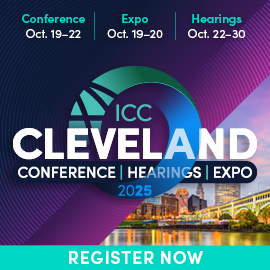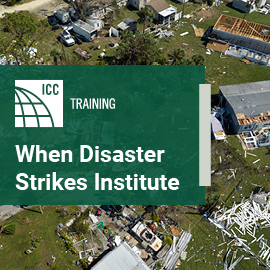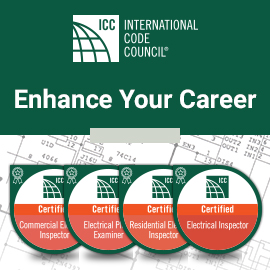
The 2018 IECC is fair to the solar industry
As state and local officials tackle building energy code issues in 2019, they likely will hear discussions about how solar photovoltaic (PV) power should fit into the energy code, and if solar energy can “trade off” for energy efficiency. Some interest groups want policymakers to weaken the efficiency requirements for new homes if the houses also have solar energy, but those requests fail to understand three things:
Solar energy and efficiency are not the same thing, and cannot be traded off one-for-one. There are technical reasons why a house with solar PV needs different insulation levels than a house without it.
The latest model energy code, the 2018 International Energy Conservation Code (IECC), was widely developed, agreed to and supported by the homebuilders, the solar industry and local building officials in a lengthy and inclusive process.
The IECC works as a kind of clean energy ecosystem, where changing just one small item can unbalance the rest of the system.
The 2018 IECC is the most flexible IECC developed, and the only one to include solar
The Energy Rating Index (ERI) path is the energy code’s newest and most flexible option for complying with the IECC. The ERI path first appeared in the 2015 IECC, but that version didn’t say whether renewable energy systems could be counted.
For the first time, the 2018 IECC clarified that solar energy is allowed in the calculation of the ERI score, as long as the home still meets minimum insulation levels. Simultaneously, the 2018 code raises the ERI scores to make them easier to meet, a change requested by home builders. These two changes, taken together, made the ERI path more viable but less energy efficient. As a result, a broad range of stakeholders, including two national home building trade associations and the national solar trade association, negotiated an agreement to maintain reasonable insulation levels to protect occupant comfort and health, so that efficiency wouldn’t bear the full brunt of the solar trade-off.
In the IECC’s 20-year history, the 2018 version is the most flexible and fair code for home builders and the solar energy industry. In fact, the ERI compliance pathway stems from requests from home builders for more flexibility, and solar energy’s inclusion stems from requests from the solar industry. The 2018 IECC is the only solar-friendly edition in the history of developing the IECC. Without the 2018 updates, solar energy providers and home builders each would have remained disadvantaged — so rather than try to amend the code piecemeal at the local level, they should embrace the 2018 requirements.
The latest question of fairness and solar
Ironically, the increased flexibility allowed under the 2018 IECC’s ERI path set off another intense debate: How much insulation should be required in homes with solar PV?
Some home builders and solar energy companies question why the 2018 code requires new homes with solar PV systems to have higher levels of insulation than homes without solar energy, but that concern is flawed in the big picture. The answer comes down to the fact that solar PV and efficiency are not the same thing and do not have the same impacts on energy usage. The 2018 IECC is written so homes, both with and without solar PV, will still achieve decent overall efficiency and consumer bill savings.
The trade-off of solar energy production against a more efficient building is far different than the trade-off of high-efficiency windows versus building insulation. Consumers with solar PV will see increased grid energy consumption and costs when daily renewable production decreases, such as happens at night or on cloudy days. A home with a well-insulated building enclosure will still be reducing grid energy usage in any weather and throughout the night. The 2018 code appropriately recognizes that an energy-efficient building will still save energy, money, and provide comfort 24/7.
When pressed, some solar energy and home building companies complain that they’re particularly vexed by ceiling insulation requirements. (In the Southwest, for instance, the 2015 IECC calls for R-49 insulation — which is what solar-powered homes sometimes must have to comply with the 2018 IECC — but the 2009 code only required R-38, which is what the 2018 IECC allows for homes without solar PV.
But the energy code already allows home builders to install R-38 in colder climates if they follow other provisions, called the prescriptive pathway. They do not have to install R-49, as they have complained. In fact, a home builder can use the prescriptive, alternative, or the simulation path to reduce insulation in the attic. Thus, claims that ceiling insulation values are unfair are off-base — because the 2018 IECC offers many ways to comply with the code.
Communities in Northern Nevada and Southern Arizona have said “no” to trading off weaker efficiency requirements in exchange for rooftop solar energy systems.
The energy code functions as a system
The IECC works as a kind of clean energy ecosystem, where changing just one small item can unbalance the rest of the system.
Outsiders may scratch their heads about this debate, but while discussions about energy codes quickly get into the weeds, the codes are for the most part understood by those who work in the building industry. Although the changes in the 2018 IECC were agreed to and supported by the solar industry, the home builders, and local building officials, each segment of the industry sees different parts of the code as more important, sometimes forgetting to consider the code as a whole.
Just as individual buildings have to function as a whole system, the IECC 2018 has to function as a whole system, too. Local stakeholders should use caution before amending or weakening the code. They need to understand that the code was written a certain way for specific, logical reasons and that arbitrary changes may greatly reduce its total effectiveness.
Advocate of zero energy homes
Let’s be clear: SWEEP advocates for the installation of solar energy systems when the building also is efficient and constructed at least to the latest energy codes. We support programs such as the U.S. Department of Energy’s Zero Energy Ready Home guidelines, which call for homes built with top-quality energy efficiency measures and with the wiring and other technologies that will allow for the addition of solar. We want solar power and energy efficiency to work in tandem.
The energy code world has changed
Clean energy advocates should support the 2018 IECC, and the model code development process, by adopting the building codes in total, and only amending the codes when local needs truly merit a change.
When speaking to policymakers, everyone should remind them that the 2018 IECC:
- Is the first IECC to recognize and account for the use of solar energy;
- Was developed and agreed to by a large group of stakeholders, including the home building industry and solar industry;
- Gives the home builders flexibility in meeting the codes;
- Grants the home builders’ request that the 2018 ERI pathway be less efficient than it was in the 2015 code;
- Allows R-38 ceiling insulation to be used instead of R-49 even without solar; and
- Is the perfect model code to help states and municipalities reach their zero-energy goals.
The bottom line: the 2018 IECC is best for consumers while also being fair to the solar energy industry and home builders. Just say “no” to proposals that weaken the efficiency in the IECC.
This article originally appeared in the Jan. 16, 2019, issue of Code Watcher and is reprinted with permission.







